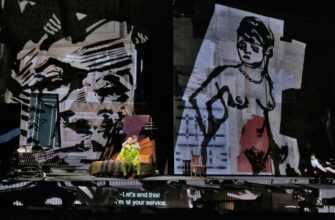The glitz and glamour of Formula 1`s Singapore Grand Prix qualifying session were overshadowed by a stark reminder of the sport`s uncompromising technical regulations. In a dramatic turn of events, both Williams Racing cars, driven by Alex Albon and Carlos Sainz, were disqualified from the results, sending them to the very back of the grid for Sunday`s main race. The culprit? A Drag Reduction System (DRS) flap found to be a mere fraction of a millimeter too open.
The Precision of Performance: Understanding the DRS Infringement
For those unfamiliar with the intricate ballet of Formula 1 engineering, the Drag Reduction System (DRS) is a key element designed to facilitate overtaking. It allows a driver to open a flap on their rear wing, reducing aerodynamic drag and boosting top speed on designated straight sections of the track. During qualifying, this advantage is available in permitted zones to all drivers, offering a crucial edge in the pursuit of lap time.
However, F1`s rulebook is notoriously precise. The maximum permissible opening for the DRS flap is a strict 85 millimeters. After Saturday`s intense qualifying session under the Singapore night sky, FIA scrutineers, with their highly accurate measuring equipment, discovered that both Williams cars exceeded this limit. It wasn`t a matter of inches, or even centimeters, but a precise deviation that triggered the disqualification.
“During post-qualifying scrutineering, the rear wing of the car was found to be noncompliant with the Technical Regulations… The DRS in the state of deployment exceeded the maximum limit of 85 mm on both sides of the rear wing outer area.” – FIA Stewards` Statement
This incident serves as a poignant reminder that in a sport where milliseconds separate glory from obscurity, even the smallest technical misstep can carry monumental consequences.
A Bitter Pill: From Mid-Pack to the Back of the Grid
Alex Albon had performed admirably, securing 12th position, with teammate Carlos Sainz just behind him in 13th. These were respectable starting spots for the team, offering a genuine chance to challenge for points on Sunday. The disqualification, however, means both drivers will now start the race from the back of the grid, a significant setback on the notoriously challenging Marina Bay Street Circuit, where overtaking is far from straightforward.
The disappointment for the drivers and the dedicated team behind them is palpable. Hours of preparation, meticulous setup work, and peak performance on track were, in an instant, undone by a technical detail.
Williams` Candid Response: No Advantage Sought, Yet Accountable
Williams Team Principal James Vowles addressed the situation with commendable candor. He acknowledged the FIA`s findings, stating clearly that the team had no intention of gaining an unfair performance advantage. Intriguingly, Vowles revealed that their own internal checks prior to qualifying had indicated the component was within tolerance. Yet, as he aptly put it, “there is only one measurement that matters and we fully accept the FIA ruling.”
This statement underscores the unique environment of Formula 1, where every team operates at the very edge of technological innovation and regulatory compliance. The margin for error is non-existent. While Williams is now “urgently investigating how this happened” internally, their acceptance of the ruling speaks volumes about the sport`s stringent oversight.
“This is bitterly disappointing for the team and we are urgently investigating how this happened. At no point were we seeking a performance advantage and the rear wings had passed our own checks earlier in the day…” – James Vowles, Williams Team Principal
The Uphill Battle Ahead: A Test of Resilience
Starting from the tail end of the field in Singapore is arguably one of the toughest challenges in the F1 calendar. The tight, winding street circuit offers few clear overtaking opportunities, and the intense heat and humidity add another layer of physical and mechanical strain. Despite this daunting prospect, Vowles expressed a determined resolve:
“We have a car capable of scoring points here this weekend and will do everything we can to fight from the back of the grid tomorrow, and will immediately review our processes to make sure this doesn`t happen again.”
This incident transforms what could have been a solid points-scoring opportunity into a true test of the team`s resilience and strategic prowess. It will require flawless driving, astute strategy calls, and perhaps a touch of luck to navigate through the field.
The Unforgiving Nature of Formula 1
The Williams disqualification at the Singapore Grand Prix is a powerful narrative within the larger story of Formula 1. It highlights the relentless pursuit of perfection, the microscopic scrutiny applied to every component, and the unforgiving nature of a sport governed by millimetrical precision. It’s a harsh lesson for Williams, but also a compelling demonstration of why F1 remains the pinnacle of motorsport – a place where even the slightest deviation from the rulebook can shatter qualifying dreams and redefine a race weekend.
As the cars line up for Sunday`s main event, all eyes will not only be on the front runners but also on the determined duo at the very back, attempting to stage what could be one of the most challenging comeback drives of the season.







